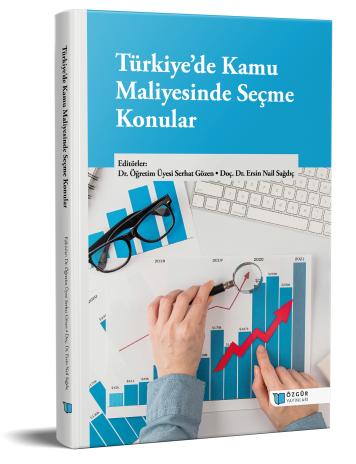
Kuruluşundan Bugüne Türkiye Cumhuriyeti’nin Dış Borçlanma Serüveni
Şu kitabın bölümü:
Gözen,
S.
&
Sağdıç,
E.
N.
(eds.)
2024.
Türkiye’de Kamu Maliyesinde Seçme Konular.
Özet
Borçlanma, ülkelerin kendi kaynaklarının yeterli olmadığı durumlarda bir zorunluluk unsuru olmakla birlikte bazen de bir ekonomi politikası aracı olarak kullanılmaktadır. Ülkelerin borçlanırken dikkat etmesi gereken temel konu borçlanmanın Gayri Safi Milli Hasıla'ya oranıdır. Bu oran belli bir seviyeyi aştığında ülke ekonomisi borç yönetiminde sorunlar yaşar. Hem gelişmiş hem de gelişmekte olan ülkeler kalkınma için borçlanmaya başvurmaktadır. Ancak gelişmekte olan ülkeler iç kaynaklarının yetersizliği nedeniyle daha fazla dış borçlanmaya ihtiyaç duymaktadır. Dış borçlar ülkeleri ekonomik ve sosyal olarak etkilemektedir.
Çalışmanın amacı, kuruluşundan bu yana Türkiye Cumhuriyeti’nin dış borç politikasını ve sonuçlarını analiz etmektir. Bu doğrultuda çalışmada öncelikle devlet borçlanmasının teorik yönleri incelenmiş, ardından dış borç kavramı, türleri ve nedenlerine değinilmiştir. Son olarak, Türkiye'de dış borçların gelişimi Cumhuriyet dönemi (1923-1946), Planlı Kalkınma öncesi dönem (1946-1960), Planlı Kalkınma dönemi (1960-1980), 1980-2000 ve 2000'den günümüze ayrı ayrı analiz edilmiştir. Sonuç olarak, Türkiye özellikle kuruluş yıllarında dış borçlanmaya fazla başvurmamıştır. 1950 sonrası dönem ise dış borçlanmaya en çok başvurulan dönem olmuştur. Petrol Krizi ve Kıbrıs Barış Harekâtı gibi ekonomik ve siyasi durumlar dış borç stokunu artırmıştır. 1980 sonrasında sermaye hareketlerinin serbestleşmesiyle birlikte ülkedeki dış borç miktarı daha da artmıştır. Dış borçlardaki artış ülkenin 1994 yılında krize girmesine neden olmuştur. 2001 krizinden sonra güçlü ekonomiye geçiş programı ve 4749 sayılı Kamu Finansmanı ve Borç Yönetiminin Düzenlenmesi Hakkında Kanun ile borç yönetiminde kontrol sağlanmıştır. Türkiye'de borçlar sürdürülebilir hale gelmiştir. Ancak 2008 Küresel Ekonomik krizi sonrasında küresel piyasalarda yaşanan olumsuz gelişmeler, Türkiye'nin yeni borç almak yerine eski borçlarını ödemesine neden olmuştur. Son yıllarda yaşanan kur atakları ve Covid-19 krizi sonrasında özel sektörün borç miktarı azalmış, kamunun payı artmıştır. Bu çalışmada ele alınan çeşitli gösterge rasyolarına göre Türkiye'nin dış borç göstergeleri hala olumlu sinyaller vermemektedir.

